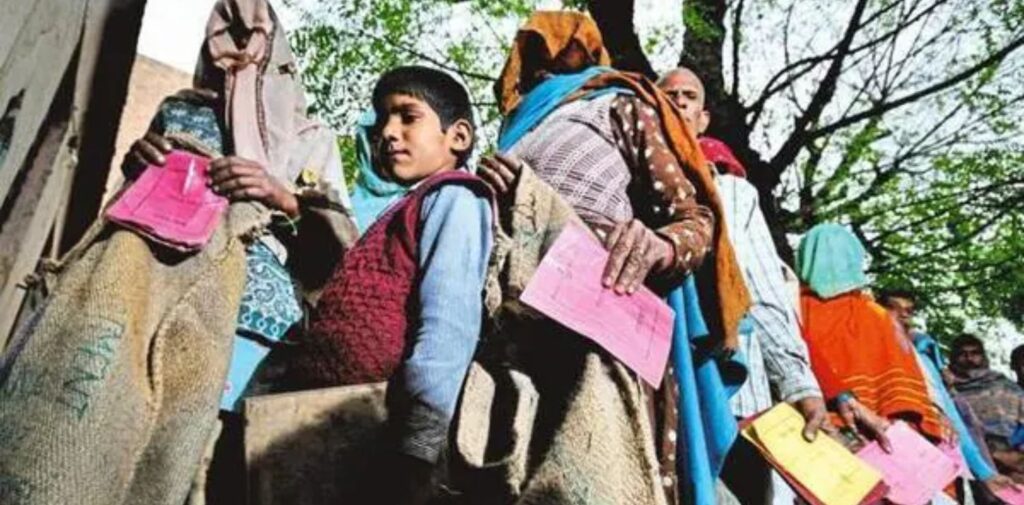India is a country of great diversity, with different languages, cultures, and histories across its many regions. However, despite this rich diversity, all parts of India do not develop at the same pace. Some regions grow quickly, with good roads, schools, and hospitals, while other regions lag behind. This difference in development is called regional disparity. Understanding how regional development works and why some areas are more developed than others is important for understanding the politics of India. In this article, we will talk about how regional development happens, the reasons for disparities, and how politics plays a role in addressing these issues.
What is Regional Development?
Regional development refers to efforts aimed at improving the economic, social, and physical conditions of different regions within a country. The goal is to reduce the gap between the rich and poor areas and ensure that all regions have equal access to resources like education, healthcare, and employment opportunities.
In India, regional development involves building infrastructure like roads, bridges, electricity, and water supply, as well as improving education and healthcare services. It also includes promoting industries and businesses in different parts of the country, so that people can find jobs and improve their quality of life.
However, despite these efforts, some regions have progressed much faster than others. For example, states like Maharashtra, Gujarat, and Tamil Nadu are much more developed than states like Bihar, Uttar Pradesh, and Odisha. This difference in development is what we call regional disparities.

What Causes Regional Disparities in India?
There are several reasons why some regions in India are more developed than others. These reasons can be historical, economic, social, and political.
1. Historical Factors
India’s history plays a big role in regional disparities. During British rule, the British focused on developing only certain areas of the country, especially cities like Mumbai, Kolkata, and Chennai. These cities were important centers for trade and administration, so they received more attention and development.
After India gained independence in 1947, the country focused on developing its overall economy. However, the focus was mostly on certain regions, and others were left behind. For example, the states in the north and east of India have historically lagged behind in terms of industrial growth and infrastructure development.
2. Geographical Factors
The geography of a region also affects its development. Some regions, like those in the western and southern parts of India, have more fertile land, good rainfall, and better access to markets, which makes farming easier. Other areas, like the hills of the north or the desert regions of Rajasthan, face challenges because of difficult terrain or lack of natural resources, which makes development harder.
3. Economic Factors
Certain regions of India are naturally more suited for business and industries. For example, Maharashtra, with its large cities like Mumbai, is home to many factories, offices, and industries. The state of Gujarat has a strong tradition of trade and commerce, and has attracted many businesses and investments. These states have strong economies and provide better job opportunities.
In contrast, regions like Bihar, Uttar Pradesh, and Chhattisgarh have a weaker industrial base. Most people here depend on agriculture, and they face challenges like poor infrastructure, lack of access to education, and low government investment, which hold back economic growth.
4. Political Factors
Politics also plays a big role in regional development. Governments in power often focus on developing areas where they have the most support. This means that some regions may receive more attention, while others are neglected. For example, the central government in India may invest more in states where it has more political influence, while regions with different political parties in power may struggle to get the same level of support.
Additionally, some states are richer because they attract more investments due to better policies or a favorable business environment. Bihar and Uttar Pradesh have faced challenges with political instability, which has led to slower development compared to states like Karnataka or Tamil Nadu, where there is more political stability and good governance.

How Do Regional Disparities Affect the People?
The gap between rich and poor regions has serious effects on the people who live in underdeveloped areas. These effects can be seen in many ways:
- Lack of Jobs: People in poor regions often struggle to find work. They rely mostly on farming, which may not be enough to provide a good income. As a result, many people migrate to cities in search of better job opportunities, leaving their villages behind.
- Poor Education and Healthcare: In regions where there is little development, schools and hospitals may not be of good quality. Children may not get a proper education, and people may not have access to basic healthcare services. This makes it harder for people to improve their lives and escape poverty.
- Poor Infrastructure: Underdeveloped regions often lack proper infrastructure like roads, electricity, and water supply. This makes daily life difficult and prevents businesses from growing. It also makes it harder for people to connect with other parts of the country and the world.
- Migration and Urbanization: As rural areas face limited opportunities, many people migrate to cities in search of work. This leads to overcrowding in cities, putting pressure on urban infrastructure and services like housing, transportation, and sanitation.

What is the Government Doing to Reduce Regional Disparities?
The Indian government has recognized that regional disparities need to be addressed to ensure balanced development. Several steps have been taken over the years to reduce the gap between rich and poor regions.
1. Planning and Policies
India has a Five-Year Plan system, where the government sets goals for economic and social development. These plans aim to promote balanced growth by focusing on areas that need the most help. For example, the government has launched schemes to improve infrastructure in rural areas, boost education, and create job opportunities.
2. Special Schemes for Backward Areas
The government has introduced special schemes like the Backward Regions Grant Fund (BRGF) to help regions that are lagging behind in development. This fund provides financial support to improve infrastructure, education, and healthcare in backward areas.
3. Infrastructure Development
The government has also focused on building better infrastructure in rural and backward regions. Roads, railways, and electricity connections have been expanded to improve accessibility. The Pradhan Mantri Gram Sadak Yojana (PMGSY), for example, is a scheme that aims to connect rural areas with better roads.
4. Promoting Education and Skill Development
To improve education and skills, the government has launched several schemes aimed at increasing literacy rates in rural areas. Programs like Sarva Shiksha Abhiyan and Skill India help provide quality education and vocational training to rural youth, allowing them to find better job opportunities.
5. Encouraging Investment in Backward Regions
The government has worked to create a favorable environment for businesses in less developed states. This includes offering incentives for companies to set up factories and industries in backward areas, helping to create jobs and boost the local economy.
Conclusion
Regional disparities in India are a complex issue, shaped by history, geography, politics, and economics. Some regions of India have developed much faster than others, leaving behind large parts of the country that continue to struggle with poverty, lack of jobs, and poor infrastructure. However, the government has recognized these disparities and is taking steps to address them through policies and special schemes.
It is important that all regions of India have equal opportunities to grow and develop. This will help reduce poverty, improve the quality of life for people in backward areas, and create a more balanced and fair society. As India continues to grow and develop, it must ensure that no region is left behind, and that all its people, whether in cities or villages, have access to the same opportunities.




